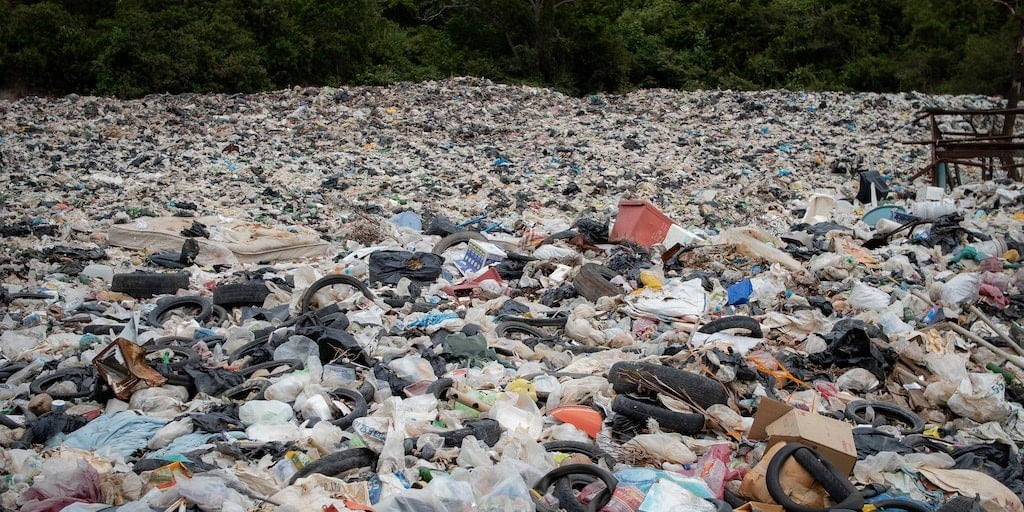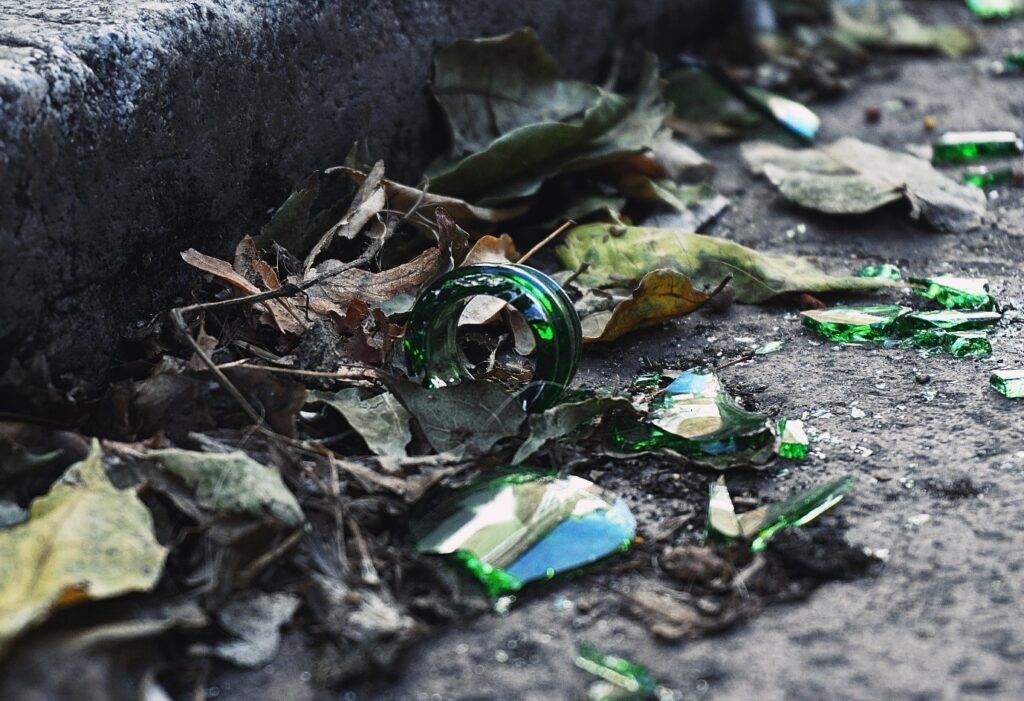September 30, 2022 / by FMP
Filed Under: How to articles regarding trash, waste and recycling
Can Landfill Waste Be Recycled?
Our planet is in trouble, and that’s no secret. From the increasing levels of CO2 in our atmosphere to the mountains of plastic waste choking our oceans, we’ve got a lot of work to do if we want to save the Earth. But what if one of the solutions was right under our noses – literally? Can landfill waste be recycled? The answer just might surprise you. Keep reading to find out more!
How Much Waste Do We Produce?
The generation of waste is an unavoidable by-product of our society. On average, an American produces about 770 kilograms of trash yearly. Two hundred eighty-seven kilograms of this is plastic waste; the remaining includes food waste, garden waste, and general household waste.
Sadly, it doesn’t seem to be slowing down; waste production has increased by a massive 40 percent since 1990. So, where does it all go?
Most waste in the US is sent to landfill. In 2022, Americans have sent almost 292 million tons of waste to landfills. This waste is recyclable, but unfortunately, only around 94 million tons are sent to recycling facilities.
What Happens When Waste Goes to Landfill?
When waste goes to a landfill, it’s buried beneath the ground and left to decompose. But unlike organic waste like food scraps, which break down relatively quickly, man-made materials like plastics can take centuries to decompose. It means that the waste we’re producing today could still pollute the environment long after we’re gone.
Not only that, but landfills are also a significant source of methane gas. Methane is a greenhouse gas that’s around 30 times more potent than carbon dioxide. So, when waste decomposes in a landfill, it produces methane gas, intoxicating the atmosphere.
Are Landfills Bad For The Environment?
Please read our recent blog on this subject.
So, Can Landfill Waste Be Recycled?
In short, yes! But it’s not as straightforward as dumping all your waste in the recycling bin. The process of recycling landfill waste is known as waste-to-energy, which involves extracting usable energy from waste.
There are several ways to do this, but the most common is through waste-to-energy plants. These plants work by burning waste to generate electricity. The heat from the burning waste creates steam, which powers a turbine that produces electricity.
Not only does waste-to-energy reduce the amount of waste going to landfill, but it also produces renewable energy that can power businesses and homes. It’s a win-win!

What Types of Waste Can Be Recycled?
The three most significant contributors to landfill waste are tires, plastics, and glass. There are many sources of these items. If you want to protect the environment, it’s important to recycle as much waste as possible.
Tires:
Americans dispose of roughly around 300 million end-of-life tires every year. Most of these are motorcycle tires, followed by passenger vehicle tires.
Luckily, the US is proactively working toward reducing the number of tires in landfills.
Common uses of tires are:
Thermal Processing: Involves using tires as fuel in cement kilns, paper mills, or power plants.
Rubber Crumb: The process of grinding tires down into a fine powder. Products, including sports surfaces, underlays, and matting, use this powder.
Reuse: Involves using tires for things like tire walls, erosion control, or water tanks. Eleven million tires are being used for this.
Plastics: Plastic bags, packaging, and single-use plastics are some of the biggest contributors to landfill waste. Americans use around a hundred billion plastic bags annually.
This number is far too high, devastatingly affecting our environment. The worst part about plastic waste is that it can take years, or centuries, to break down. Therefore, we must look for ways to recycle it.
Ways we can reuse plastic is by turning it into:
· Textiles
· Furniture
· Bottles
· Construction materials
Recycling plastic waste is a pragmatic way to reduce waste going to landfills. But it’s not the only solution. We also need to reduce our reliance on single-use plastics. For this reason, many socially-responsible brands like Starbucks and Loreal are ditching plastic in favor of more sustainable packaging options.
Glass:
How many beer bottles, dessert jars, and wine glasses do you use in a week?
The US produces ten million metric tons of glass waste a year. Much of this glass ends up in landfill, where it takes millions of years to decompose. The good news is that glass doesn’t lose its quality even upon repeated recycling. Approximately 75% of all the glass produced is still in use today.
That’s pretty amazing, don’t you think?
Some valuable items we can make from recycled glass are:
· Windows
· Insulation
· Glass bottles
The process of recycling glass is pretty straightforward:
1. Sort waste glass by color
2. Crush into a fine powder called cullet
3. Mix the cullet with sand, limestone, and soda ash (sodium carbonate)
4. Heat it to around 1400 degrees Celsius. It melts the cullet and forms a new piece of glass
Mattresses:
Did you know that mattresses are one of the most commonly disposed of items in a landfill? Whether they’re old and worn out, or we just don’t need them anymore, mattresses take up a lot of space in a landfill.But, there’s always a high chance that some usability was left in that mattress. It is why recycling is a better option. Americans dispose of around 20 million mattresses each year. Each of these can take up to 30 years to break down in a landfill. And if left to decompose in the open air, it takes around 11 years for a mattress to decompose.
So, what can we make out of a mattress?
Soundproofing Material
Carpet underlay
Garden mulch
Soil Enhancer
Pretty useful, isn’t it? So, the next time you get rid of an old mattress, make sure you recycle it!
How do you recycle Batteries?
We will let the good earthy people at Earth911 show you how with their comprehensive guide. We advise that you buy rechargeable batteries and always dispose of single use batteries properly.
Wrapping Up:
Well? Can landfill waste be recycled?
As you can see, there are many ways to recycle waste instead of throwing it into landfill. By recycling waste, we can reduce our reliance on single-use products, save space in a landfill, and help to protect our environment. It’s essential to do if we want to preserve our planet for future generations.

